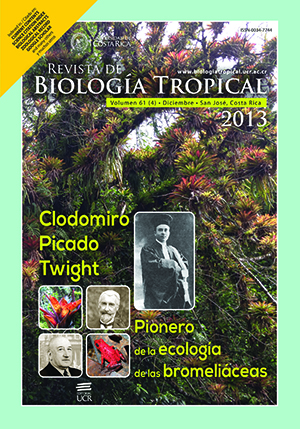Abstract
Phytoplankton occurrence and dynamics in rivers are mainly shaped by hydrophysical conditions and nutrient availability. Phytoplankton main structuring factors have been poorly studied in West African rivers, and this study was undertaken to identify these conditions in two tropical rivers that vary in size and human impact. For this, environmental variables and phytoplankton monthly samples were collected from the middle reaches of Asu and Cross rivers during an 18 months survey from March 2005-July 2006. Phytoplankton biomass (F=11.87, p=0.003), Shannon-Weiner diversity and species richness (F=5.93, p=0.003) showed significant seasonality in Asu but not in Cross River. Data was analyzed with Canonical correspondence analysis (CCA) and showed environmental differences between the two rivers, nitrate in Asu River (5.1-15.5mg/L) was significantly higher than Cross River (0.03-1.7mg/L), while PO4 (0.2-0.9mg/L) was significantly lower in Asu River compared to Cross River (0.03-2.6mg/L) (p<0.05). Eutrophic factors (NO3) determined primarily phytoplankton dynamics in Asu River, especially during the dry season, whereas hydrophysical factors (depth, transparency and temperature) shaped phytoplankton in Cross River. Taxa indicative of an eutrophic condition, such as Euglena, Chlorella, Chlorococcus, Ceratium, Peridinium, Anabaena, Aphanizomenon, Closterium, Scenedesmus and Pediastrum spp., were frequently encountered in the shallow impounded Asu River, while riverine species, such as Frustulia rhomboids, Gyrosigma sp., Opephora martyr and Surirella splendida dominated Cross River. A succession pattern was observed in the functional groups identified: Na/MP→TB→P (rainy→dry season) was observed in Asu River, whereas MP/D predominated in Cross River for both seasons. We concluded that, if nutrients predominate hydrophysical factors in shaping phytoplankton during dry season (half of the year) then, they are as important as hydrophysical factors structuring phytoplankton during rainy season (the other half).##plugins.facebook.comentarios##
Downloads
Download data is not yet available.






